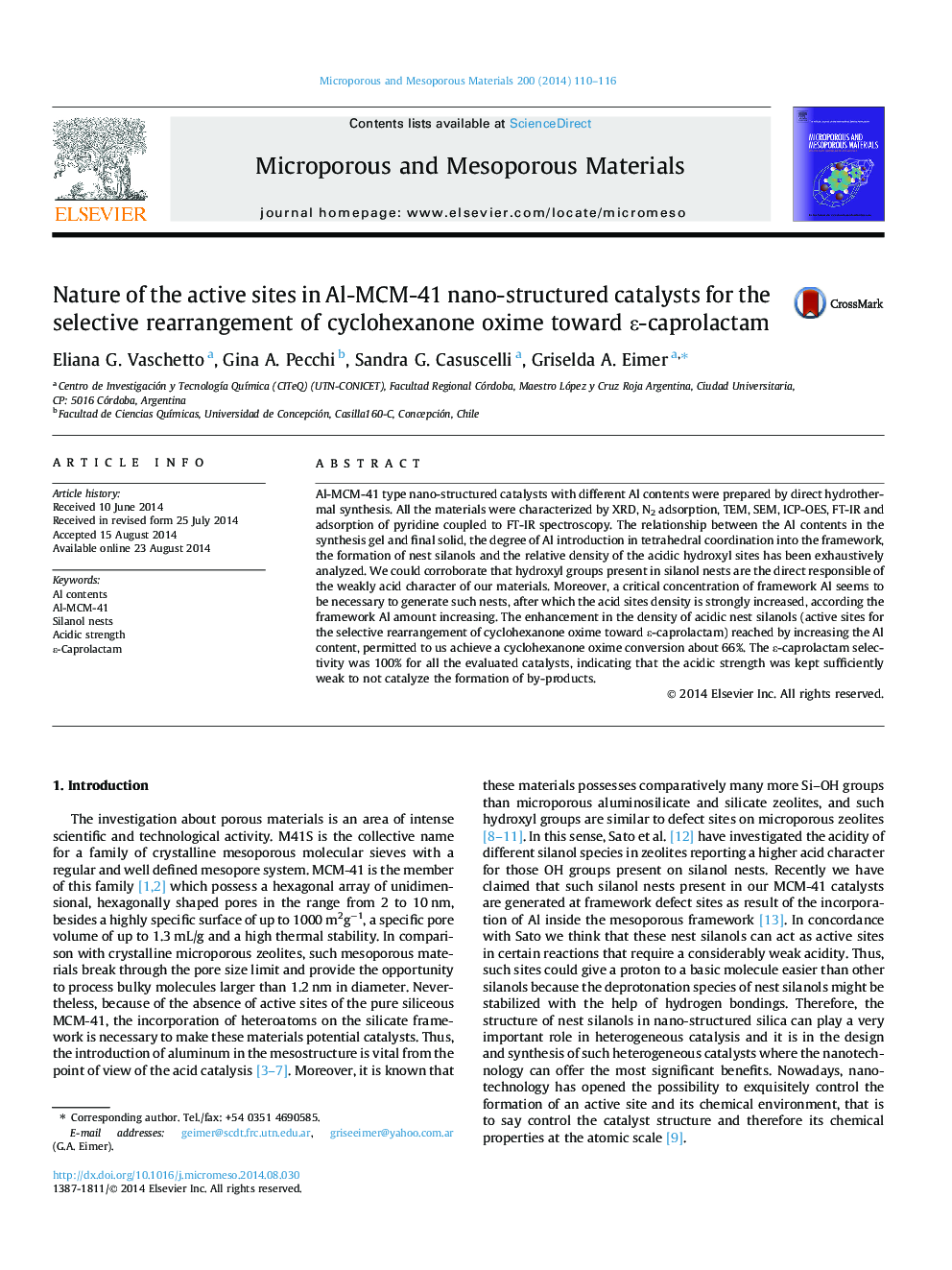| کد مقاله | کد نشریه | سال انتشار | مقاله انگلیسی | نسخه تمام متن |
|---|---|---|---|---|
| 72692 | 49031 | 2014 | 7 صفحه PDF | دانلود رایگان |

• Nano-structured Al-MCM-41 has been prepared with different Al contents.
• The incorporated Al and the formation of silanol nests increase with the Al content.
• A critical proportion of framework Al is necessary to generate nests silanols.
• The weakly acid character present in samples is purely caused by the nest silanols.
• The ɛ-caprolactam selectivity was maintained in 100% for all of the Al contents.
Al-MCM-41 type nano-structured catalysts with different Al contents were prepared by direct hydrothermal synthesis. All the materials were characterized by XRD, N2 adsorption, TEM, SEM, ICP-OES, FT-IR and adsorption of pyridine coupled to FT-IR spectroscopy. The relationship between the Al contents in the synthesis gel and final solid, the degree of Al introduction in tetrahedral coordination into the framework, the formation of nest silanols and the relative density of the acidic hydroxyl sites has been exhaustively analyzed. We could corroborate that hydroxyl groups present in silanol nests are the direct responsible of the weakly acid character of our materials. Moreover, a critical concentration of framework Al seems to be necessary to generate such nests, after which the acid sites density is strongly increased, according the framework Al amount increasing. The enhancement in the density of acidic nest silanols (active sites for the selective rearrangement of cyclohexanone oxime toward ɛ-caprolactam) reached by increasing the Al content, permitted to us achieve a cyclohexanone oxime conversion about 66%. The ɛ-caprolactam selectivity was 100% for all the evaluated catalysts, indicating that the acidic strength was kept sufficiently weak to not catalyze the formation of by-products.
Figure optionsDownload as PowerPoint slide
Journal: Microporous and Mesoporous Materials - Volume 200, December 2014, Pages 110–116